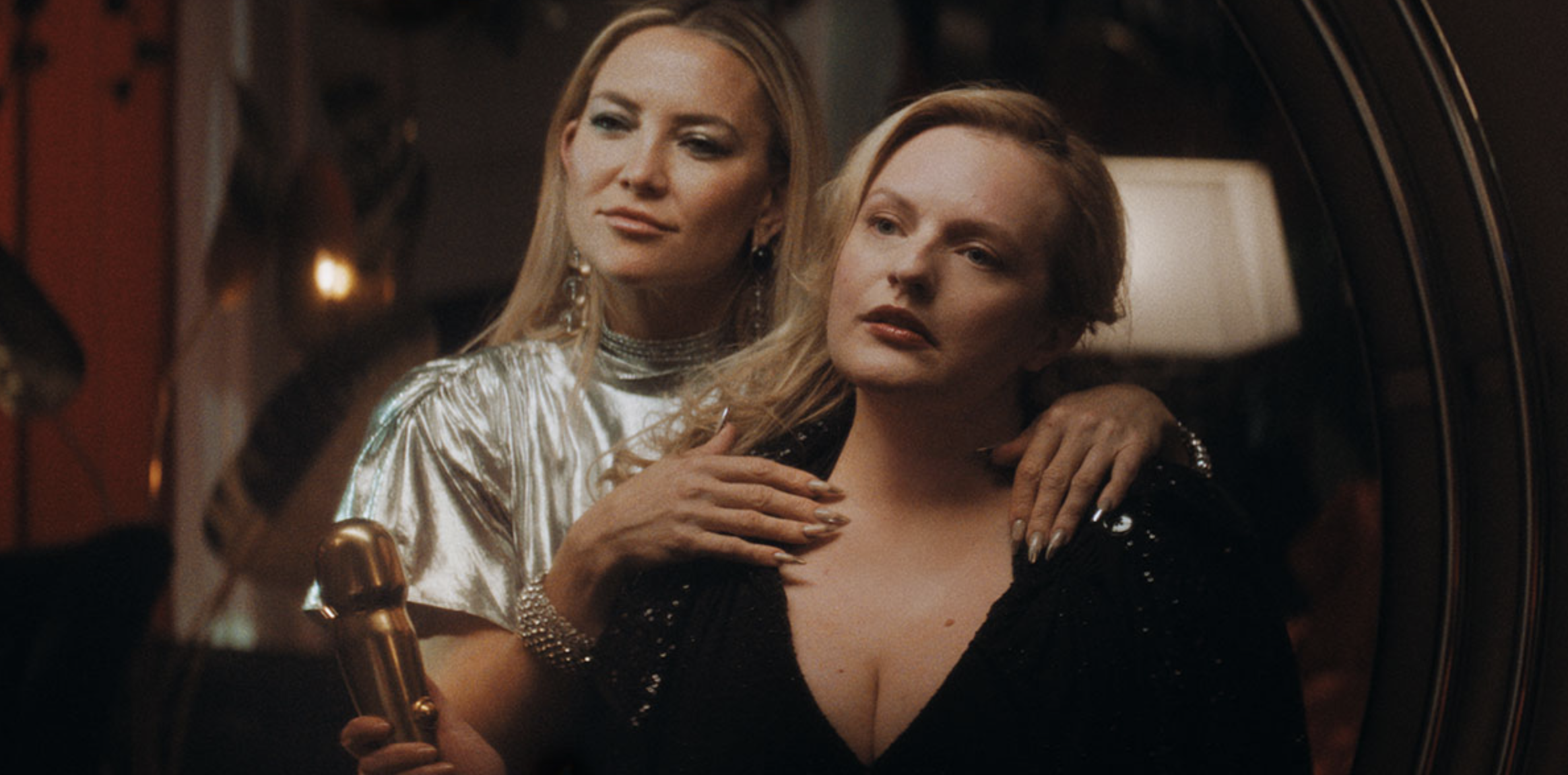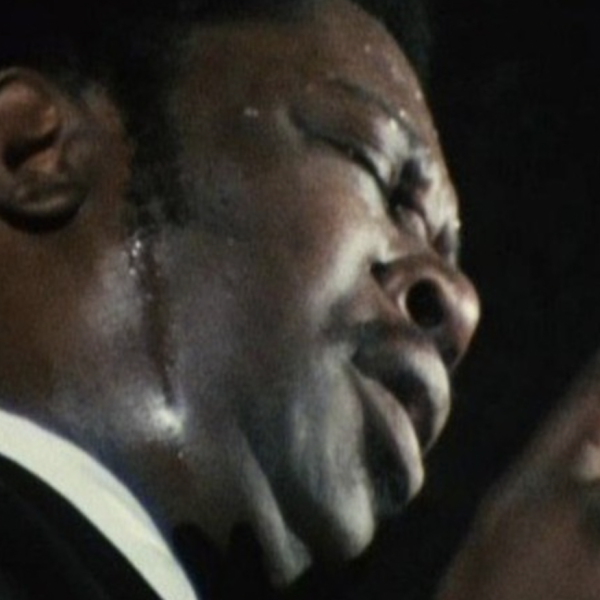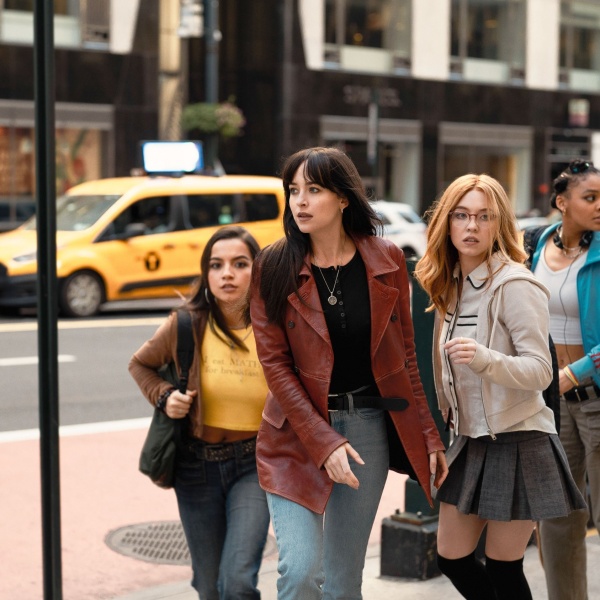Some movies suffer because of bad timing. “Shell” wouldn’t be a very good movie under any circumstances, but it fares especially poorly against Coralie Fargeat’s “The Substance,” a better and more outrageous film that deals in very similar subject matter. “Outrageous” is what director Max Minghella is going for here. And when it accepts its destiny as a ‘50s-style rubber-suit sci-fi monster movie, “Shell” does have camp value to it. Even then, it still doesn’t commit to the bit hard enough to make it successful.
There are some funny moments in “Shell” — both intentional and unintentional — and some eye-catching images. The first living creature to appear on screen is a fluffy lap dog smeared with blood, which combines the two; it trots down a dark hallway in an ‘80s-style mansion, its little legs moving as fast as they can. The camera follows the dog into a retro tiled bathroom, where Elizabeth Berkley is sitting in a shell-pink bathtub wearing a matching silk robe cutting grotesque black bumps off of her leg. She’s freaking out. The tub is slippery with blood. She passes out and drops the knife, and the dog starts licking it clean.
It’s a promising cold open, one that leads into an uneasy blend of attempted pathos and tired entertainment-industry satire as Samantha (Elisabeth Moss) goes out for what she thinks is a meeting with the director of one of the downbeat indie movies Moss sometimes stars in in real life. It turns out to be an open audition, and Samantha loses the role — a divorced single mother of two — to “it” girl Chloe Benson (Kaia Gerber). Chloe is barely old enough to drink, let alone have two kids, but she’s hot and popular on social media so there you go. The experience leads Samantha’s reps (one of whom is played by Ziwe, perfectly cast) to suggest, their voices thick with smarmy faux-concern, that she go rest at the Shell clinic for a while.
CEO Zoe Shannon (Kate Hudson) is the face of Shell, a company whose services blend elements of “Death Becomes Her” and “The Lobster.” In a spa-like atmosphere, people like Samantha can stave off their fear of irrelevance by undergoing an outpatient procedure where their DNA is fused with the DNA of a lobster, or something, resulting in a younger, stronger, taller version of themselves with clear skin and bright eyes. A lot is explained, but none of it sticks. The only things that land are the cutting jokes, which, again, are nothing new — did you know Los Angeles is a shallow and insincere place? — but get some chuckles in the moment.
The satire here is clumsy, gesturing at similar points already made in better movies. There’s a rule in comedy that if you have to explain a joke, it’s not a very good joke, and a similar sort of ambiguity is at play here. It’s not always clear if, say, a montage set to “Walkin’ on Sunshine” after her Shell treatment improves Samantha’s life is a tongue-in-cheek parody of cheesy ‘80s movies, or if it’s just plain cheesy itself. This all ties into the camp factor, which could also be used to explain away hacky details like Samantha’s cat as a stand-in for her spinsterhood. Hypothetically.
“Shell” also fancies itself body horror, but again it doesn’t commit hard enough to truly excel in that area. Samantha barfs up some black bile, and Zoe’s sycophants eat her skin at a dinner party in a bit that briefly frames her as a Christ figure but doesn’t go anywhere. Then there are the bumps that pop up when the procedure “goes wrong,” which are referred to in the film as “scales” but are more like the kind of lumpy mole that would prompt a visit to the dermatologist. A whole rash of them is pretty gross, but not as gross as it needs to be. Where’s the goop?
Mysterious pink liquids are injected into willing subjects from unlabeled vials at the Shell clinic, again shades of “The Substance.” Even the surface aesthetics of the films are similar: Both have an eye for ‘80s-inspired fashions and architecture, which manifests here in the form of silver lamé and curved lines. The heightened reality of this film is not as well constructed, however, and with much less intentionality: The self-driving cars that appear in the background throughout the film,for example, serve no particular purpose except to shore up its sci-fi credentials.
Everyone in “Shell” lives in this reality except for schlumpy everywoman Moss, who feels like she’s about a half-step off from everyone else. That’s not a failure on the part of the actor, who has proven herself more than capable many times over. It is indicative of the overall clumsiness of the project, whose lack of consistency is present even in little details like that fact that some of the magazines in the film are real (Samantha is profiled in “Vanity Fair”) and others are not (ditto for Zoe in “Persons”).
Hudson, meanwhile, does understand the tone Minghella is aiming for here, or is perhaps setting it herself. Her motivations for striking up a friendship with Samantha are inscrutable and predatory, and she plays the chilly villainess with relish as she struts around in fabulous gowns and purrs out pseudo-scientific bullshit. (There’s also the potential for a lesbian subtext to her relationship with Moss, but this is sadly underdeveloped.) Her perfection is supposed to make her hateable, and Moss’ imperfection is similarly meant to frame her as relatable. But pulling off that dynamic in a movie that also has human-sized crustaceans in it is a project for a more skilled filmmaker than this one.
Grade: C
“Shell” premiered at the 2024 Toronto International Film Festival. It is currently seeking U.S. distribution.
Want to stay up to date on IndieWire’s film reviews and critical thoughts? Subscribe here to our newly launched newsletter, In Review by David Ehrlich, in which our Chief Film Critic and Head Reviews Editor rounds up the best reviews, streaming picks, and offers some new musings, all only available to subscribers.




